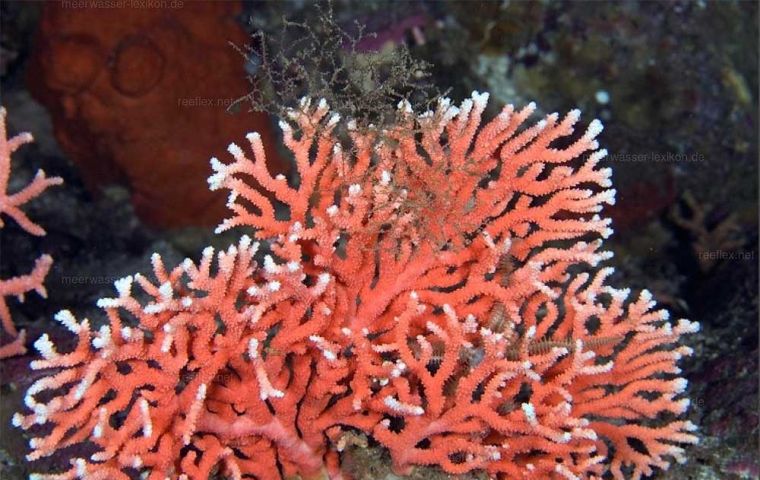MercoPress. South Atlantic News Agency
Unprotected red hydrocoral species found in Strait of Magellan
 The “Errina Antarctica” species does not have any type of protection even though it is found in Chile in a vulnerable state of conservation
The “Errina Antarctica” species does not have any type of protection even though it is found in Chile in a vulnerable state of conservation Scientists in southern Chile have found in the Strait of Magellan a type of red hydrocoral, consisting of immobile animals similar in appearance to a plant or a rock. The specimens of “Errina Antarctica” were discovered in the Kawésqar National Reserve, a protected marine area more than 3,000 km from Santiago, it was reported Friday.
The discovery by researchers from the Rewilding Chile Foundation and the Spanish Institute of Oceanography was published in Nature's Scientific Reports webpage and announced Friday, marking the June 8 Oceans Day celebrations.
The corals, which are immobile animals, are three-dimensional and calcareous structures that form forests and increase the biodiversity of the places where they are, because they function as habitat and refuge; spawning and mating site for different species. They grow “where a lot of biodiversity lives, where they take refuge, reproduce and feed other animals, and where they generate a certain stability, especially in sectors where there is a lot of current,” explained Ingrid Espinoza, co-author of the study and director of Conservation Rewilding Chile.
These small organisms come together and can come to form structures known as Animal Marine Forests (AMF). Because of their high ecological value, they have been catalogued as one of the most biodiverse ecosystems on Earth, according to the International Union for Conservation of Nature.
The study was carried out between 2021 and 2023. Divers and robots descended into the icy waters of the Strait of Magellan and photographed the presence of red hydrocorals from a depth of 1.3 meters down to 47 meters, it was also explained.
Hydrocorals and corals “are an extremely important contribution from the point of view of biodiversity, as informants, as sentinels of environmental impacts and disturbances,” Espinoza added while warning about threats posed by human action, such as salmon farming, climate change, and ocean pollution. “They are species that react very quickly to the impacts of climate change, true sentinels that indicate certain changes. This should make you aware that these areas, these species and these types of findings are providing us with information for decision making: where to conserve, why conserve and how to conserve,” said Espinoza.
Despite its prominent role in the development of the seabed, this species does not have any type of protection even though it is found in Chile in a vulnerable state of conservation. “For this reason it is necessary to protect them, conserve them and look for ways to manage them so that they continue to endure and have a long life,” she added.
Regarding the findings in the Strait of Magellan, Espinosa also pointed out that “in this particular area there is very little information” and admitted that researchers had been “lucky enough to reach a site where we found the Antarctic errina, which is a red hydrocoral, in very shallow waters, of very shallow depth.” The current research detected them in this reserve with sizes ranging from 0.14 to 15.8 centimeters and at depths ranging from 1.23 to at least 33 meters.”




Top Comments
Disclaimer & comment rulesCommenting for this story is now closed.
If you have a Facebook account, become a fan and comment on our Facebook Page!